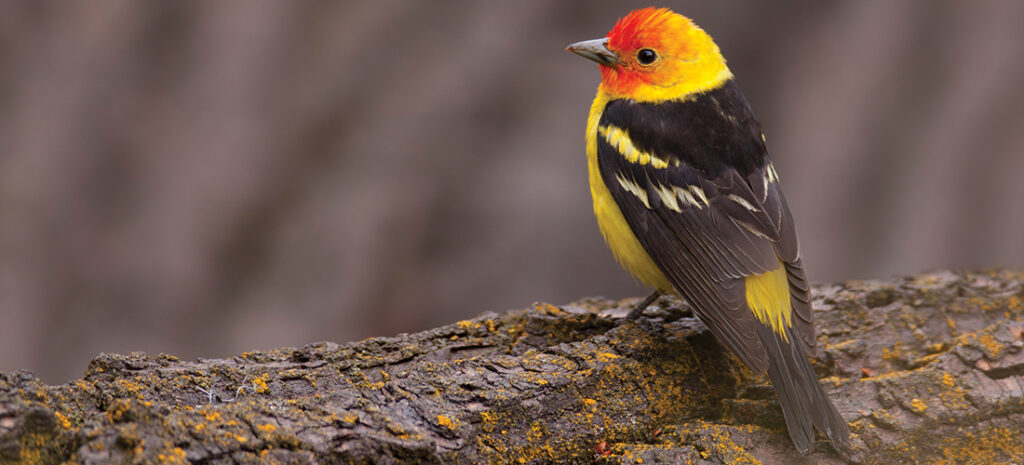Birdwatch

An Unlikely Visitor
The rare sight of a western tanager
By Susan Campbell
In the Sandhills and beyond we occasionally find western wanderers soaring overhead, perched in the treetops, or even at a feeder. Birds have wings and so they can (and do) end up anywhere. One of the most exciting parts of watching birds is that you never know who might show up.
Some birds are quite prone to vagrancy. Whether this condition is a result of wandering, getting lost or blown off course, we cannot usually say. Species that are long-distance migrants are, not surprisingly, at risk for mishaps en route. Though studied a great deal, very little about migration is understood. The fact is birds do migrate and most individuals are successful at it, allowing their genes to be passed on to the next generation.
This is not to say that those birds that end up off track are bound to stay lost forever or perish as a result of a wrong turn along the way. In fact, it’s believed that these out-of-place individuals, in some cases, represent the beginning of a range expansion for their species. Records have been kept long enough that we have documented bird populations moving into new areas of the United States.
A species that has been observed in the winter more and more frequently, well outside of its normal range, is the western tanager. This small but colorful songbird is found in the warmer months throughout most of the western U.S. in a variety of wooded habitats. They head for Mexico and Central America come fall. However, in the early ’90s, one showed up at a feeder in Wilmington and stayed — not just one winter but returned for two more. It fed on suet, shelled seeds and fruit. Since then, more than a dozen other individuals have been documented along the southern coast of North Carolina. What does this mean? It is probably too soon to tell. But bird lovers in our southeastern counties are keeping their eyes out for westerns each year.
It has been more than a decade since the first western tanager appeared in the Sandhills. But this winter, a male western tanager once again turned up in a Pinehurst yard. The hosts, being bird people, realized they had something out of the ordinary at their feeders. It was tricky seeing the necessary field marks on him given his secretive nature. All tanagers molt twice a year and happen to be drab from early fall through early spring, so identification is a bit tricky when these birds do appear in the East. Unlike our more familiar summer and scarlet tanagers, westerns have noticeable barring on their wings and are brighter yellow on their underparts.
Interestingly, there was also a western tanager in Apex (outside Raleigh) this season. It, too, was a male, but he arrived with lots of orange and red on his head and face already — clearly an adult bird. Like the Pinehurst tanager he was rather shy at first, but within a few weeks, settled in and began strutting his stuff several times a day, enjoying mealworms and bits of fruit from the big platform feeder.
Though sightings of western tanagers are rare, it pays to be prepared with binoculars and a good field guide should something “odd” show up. The unusual is always possible, whether you are visiting a large wildlife refuge, local park, a McDonald’s parking lot or even in your own backyard. PS
Susan Campbell would love to hear from you. Feel free to send questions or wildlife observations to susan@ncaves.com.
